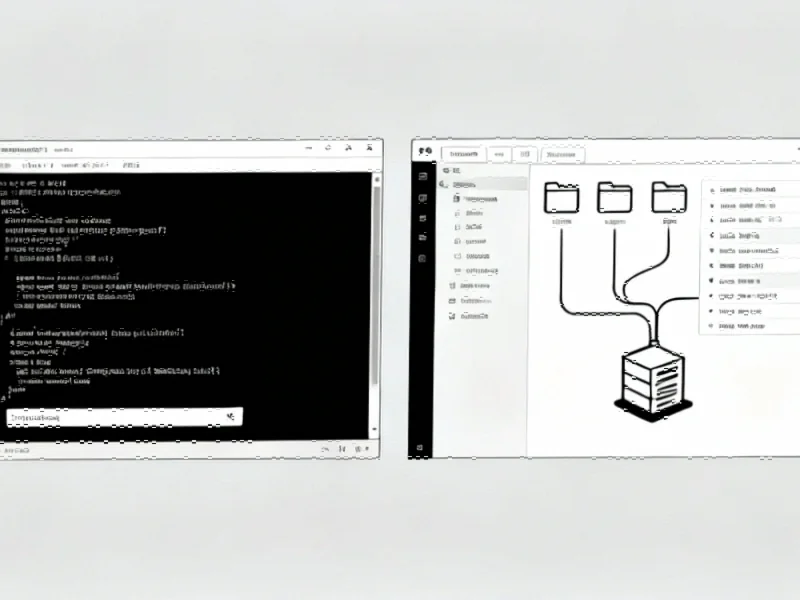The Illusion of Openness in Modern Software
In today’s software landscape, the term “open” has become increasingly ambiguous. While many companies proudly advertise their products as transparent or source-available, this doesn’t necessarily mean they embrace the true spirit of open source. The distinction between genuine open-source software and merely source-available alternatives represents more than semantic nitpicking—it’s a fundamental difference in philosophy that impacts user rights, innovation, and software sustainability.
Defining True Open Source: More Than Code Visibility
Open-source software operates within a specific legal and ethical framework that guarantees four essential freedoms: the right to use, study, modify, and distribute the software for any purpose. These freedoms, codified in licenses like GPL, MIT, and Apache 2.0, create an ecosystem where collaboration and improvement can flourish without restrictions. The true requirements for open-source software extend far beyond mere code visibility to encompass these fundamental user rights.
When examining recent technology governance models, we see parallels in how transparency without actual control can create misleading perceptions of openness. Just as corporate governance requires genuine shareholder influence rather than just information access, true open source requires actual user empowerment beyond code inspection rights.
Source-Available Software: The Limitations of Restricted Access
Source-available software presents a different paradigm—one where code is visible but usage is restricted. Companies often adopt this approach to balance transparency with business interests, allowing users to inspect code while prohibiting modifications, commercial use, or redistribution. While this model offers educational value and demonstrates a degree of transparency, it fundamentally lacks the collaborative potential that defines genuine open source.
The restrictions in source-available licenses often include:
- Prohibition of commercial use
- Limitations on modifications and derivatives
- Restrictions on redistribution
- Reservation of key decision-making powers
Case Studies: When “Open” Doesn’t Mean Open Source
Several high-profile examples illustrate how companies navigate this distinction. Meta’s Llama language model provides source code access but restricts commercial applications, placing it firmly in the source-available category. Similarly, Elasticsearch transitioned from open source to a source-available license to prevent cloud providers from offering it as a service without contributing back.
These examples highlight how industry developments in various sectors often involve complex balancing acts between openness and commercial interests. The technology sector isn’t alone in facing these challenges—similar tensions exist across multiple industries where transparency and control must be carefully balanced.
The Business of “Open Washing”
Marketing teams have increasingly recognized the appeal of open-source terminology, leading to what some call “open washing”—the practice of using open-source language to describe software that doesn’t actually provide open-source freedoms. This practice creates confusion in the market and dilutes the meaning of genuine open source, potentially undermining trust in the entire ecosystem.
This phenomenon isn’t unique to software. When examining market trends in other sectors, we see similar patterns where terminology becomes diluted through marketing usage. The key distinction lies in whether the promised freedoms are actually delivered rather than just suggested through carefully crafted language.
Why the Distinction Matters for Users and Developers
For users, the difference between open source and source-available software translates to practical implications:
- Long-term sustainability: True open-source projects can outlive their original creators, while source-available projects typically depend on continued corporate support
- Customization and control: Open source allows modifications to meet specific needs, while source-available software often prohibits significant changes
- Cost and licensing: Open source typically involves fewer licensing complications and cost uncertainties
For developers, the distinction affects contribution opportunities and career development. Genuine open-source projects welcome community contributions through established mechanisms like pull requests and issue tracking, while source-available projects often reserve development authority exclusively for the original team.
Navigating the Landscape: How to Identify True Open Source
Determining whether software is truly open source requires careful examination of several factors:
First, check the license against the Open Source Initiative’s approved list. OSI-approved licenses guarantee the essential freedoms that define open source. Second, examine the project’s governance model—true open-source projects typically have transparent decision-making processes that include community input. Finally, assess the project’s contribution mechanisms and whether external developers can meaningfully participate in development.
As we consider related innovations across the technology sector, we see that meaningful openness often requires challenging established conventions. Just as some companies defy industry trends to meet specific user needs, true open-source projects maintain their principles even when commercial pressures might suggest alternative approaches.
Preserving the Meaning of Open Source
The open-source movement represents more than a development methodology—it’s a philosophy centered on collaboration, shared ownership, and user empowerment. Preserving the distinction between open source and source-available software protects these values and ensures that users understand what they’re actually getting when they choose “open” software.
Both models have legitimate places in the software ecosystem, but clarity about their differences enables informed decisions. Developers can choose source-available models when business requirements demand it, while users can select true open-source software when they prioritize freedom and community-driven development. What matters most is honest communication about what each model actually provides.
As the software industry continues to evolve, maintaining this distinction will become increasingly important for preserving the innovation, resilience, and collaborative spirit that have made open source such a powerful force in technology.
This article aggregates information from publicly available sources. All trademarks and copyrights belong to their respective owners.
Note: Featured image is for illustrative purposes only and does not represent any specific product, service, or entity mentioned in this article.



